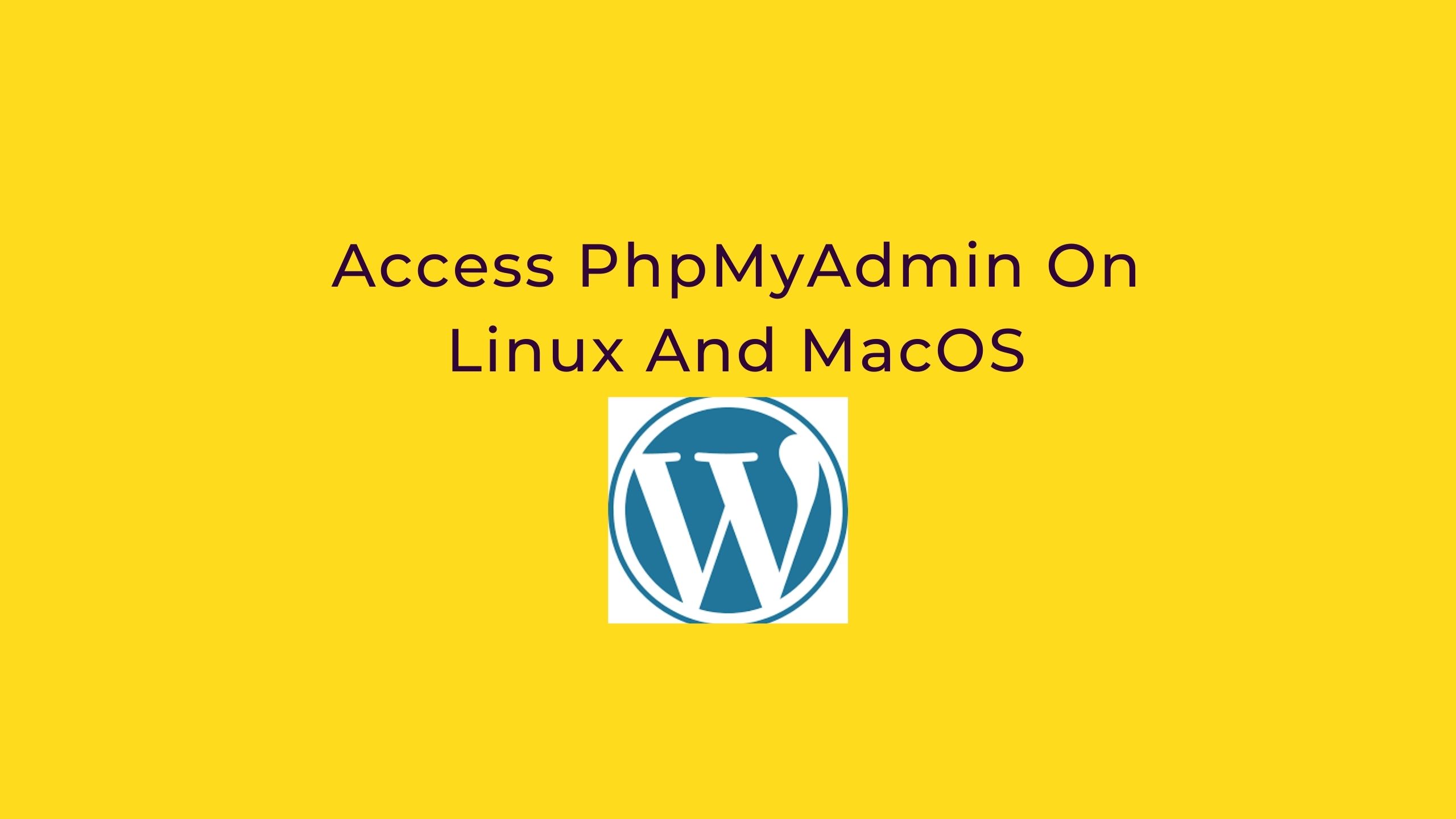

- #Access phpmyadmin how to
- #Access phpmyadmin install
- #Access phpmyadmin password
- #Access phpmyadmin free
Now we need to add the following line to the bottom of this file. To get started, we need to edit the “ nf” file, we can do this by entering the following into the terminal. Before we can load the PHPMyAdmin interface on our Raspberry Pi, we will need to make some configuration changes to Apache. Once done you can proceed to configure PHPMyAdmin for Apache or NGINX. You can exit out of the MySQL command line interface by typing “ quit” in the terminal. GRANT ALL PRIVILEGES ON *.* TO IDENTIFIED BY 'password' WITH GRANT OPTION ħ.
#Access phpmyadmin password
Make sure you replace “ username” with the username of your choice.Īlso, replace “ password” with a secure password of your choice. Remember the details you enter here as you will use these to log in to PHPMyAdmin Now run the command below to create a user and permit it to access all databases on the MySQL server. To do this, we will need to first login to the MySQL command line interface using the “ root” user with the password you set up. Instead, you will need to create a new user if you wish to create and access data tables within PHPMyAdmin. PHPMyAdmin by default will block you from logging into the PHPMyAdmin interface using the “ root” user. With the PHPMyAdmin installation process complete, there is one last thing we need to do. This password is what PHPMyAdmin will use to connect to the MySQL server.ĥ. It is best to set this password to something different to your root SQL password. It will now ask you to set a password for PHPMyAdmin itself.

To do this select “ ” at the next prompt.Ĥ. We will also need set up some details so that we can log in to the PHPMyAdmin software. Next, we will need to configure PHPMyAdmin to connect to our MYSQL server. Select this option even if you are using NGINX as we will configure that ourselves latest on.ģ. Select the “ apache2” option by pressing SPACE and then ENTER.

You will be presented with a screen asking the type of web server you want it to run off. It will require your input on various steps along the way.
#Access phpmyadmin install
PHPMyAdmin will now begin to install to your Pi. To install the PHPMyAdmin package to our Raspberry Pi, we need to run the command below. If you don’t have this, you will not be able to install PHPMyAdmin.ġ. You will need to have the password you set up for the root MYSQL account. You will also need to install and setup MYSQL. Setting up PHPMyAdmin on the Raspberry PiĪs with all of our tutorials, we will be using the latest version of Raspbian to complete this tutorial.įirst, make sure that you followed the previous tutorial on installing a web server with PHP support. You will need the pieces of equipment listed below to complete this Raspberry Pi PHPMyAdmin tutorial. If you haven’t already installed a web server, you can learn from our guide on installing Apache or our guide to installing NGINX. I recommend checking out some tutorials if you’re completely new to managing databases.
#Access phpmyadmin how to
Learning how to use PHPMyAdmin is quite daunting for beginners. You to need have a web server on your Raspberry Pi set up and ready to use. You will find that installing Raspberry Pi PHPMyAdmin is very easy to do and won’t take long. It is hugely popular and used in a lot of web server environments throughout the world.
#Access phpmyadmin free
etc/nginx/sites-available/ this Raspberry Pi PHPMyAdmin tutorial, we will take you through the steps on how to install the popular MySQL administration tool PHPMyAdmin to your Raspberry Pi.įor anyone who doesn’t know, PHPMyAdmin is a free tool that has been designed to allow for easy administration of MySQL. Make sure to set up nginx#FastCGI and use nginx#Server blocks to make management easier.īy preference, access phpMyAdmin by subdomain, e.g. If you still want to access PhpMyAdmin on a remote server securely, you might want to consider setting up an OpenSSH#Encrypted SOCKS tunnel.Īfter making changes to the Apache configuration file, restart rvice.Ĭonfiguring Lighttpd, make sure it is able to serve PHP files and mod_alias has been enabled.Īdd the following alias for PhpMyAdmin to the config:Īlias.url = ( "/phpmyadmin" => "/usr/share/webapps/phpMyAdmin/") Beware that this will disallow connecting to PhpMyAdmin on a remote server. For example, if you only want to be able to access it from the same machine, replace Require all granted by Require local. To change this, edit /etc/httpd/conf/extra/nf to your liking. Note: By default, everyone who can reach the Apache Web Server can see the phpMyAdmin login page under this URL.


 0 kommentar(er)
0 kommentar(er)
